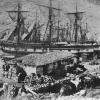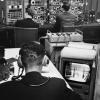More than a thousand words?

Telegraph transmission of a photograph via a looped line Berlin-Munich-Berlin.
During the 1880s, a series of technological innovations in the area of photo reproduction, such as small portable cameras and photomechanical halftones, gave journalism new impetus. These innovations allowed the mass reproduction of photographic images. While such published photographs took the place of "eye-witness" accounts, they told more than just a thousand words.
Reproduced photographs in newspapers say as much about the ideology of the agency that published them as the event itself. The heydey of photojournalism occurred during the 1920s and 1930s. When newspapers reported on the Spanish Civil War between 1936 and 1939, they employed photos as evidence that their stories were true.
But the question is what the truth of the story actually was. To the French press, a photo of a dead soldier, for instance, did not represent facts about death in warfare; instead it represented the idea of individual heroism, the idea that death in war had significance.

How to cite this page
Suzanne Lommers, 'More than a thousand words?', Inventing Europe, http://www.inventingeurope.eu/media/more-than-a-thousand-words
Sources
- Brothers, Caroline. War and Photography: A Cultural History. London; New York: Routledge, 1997.
- English, Donald E. Political Uses of Photography in the Third French Republic, 1871-1914. Ann Arbor, Mich.: UMI Research Press, 1984.



















